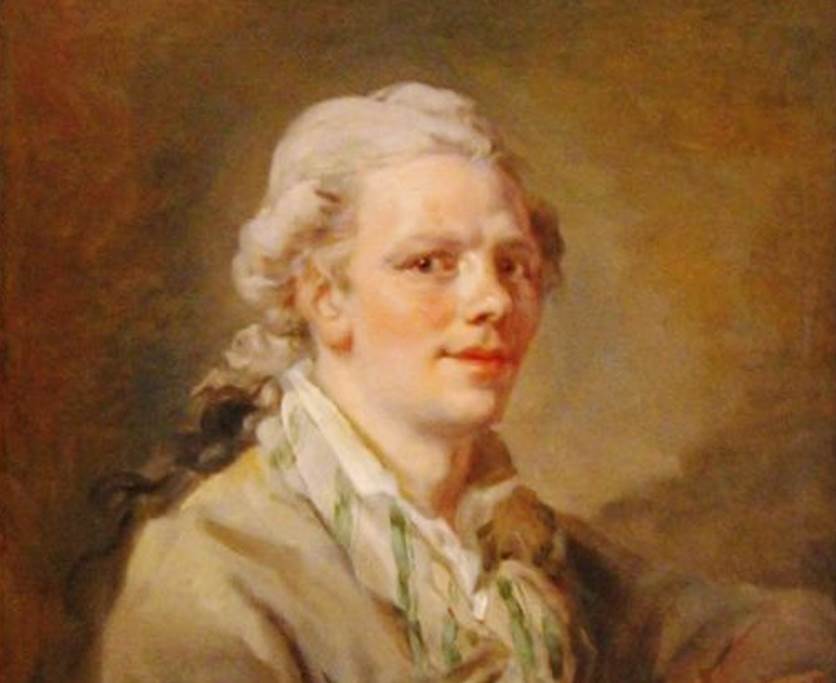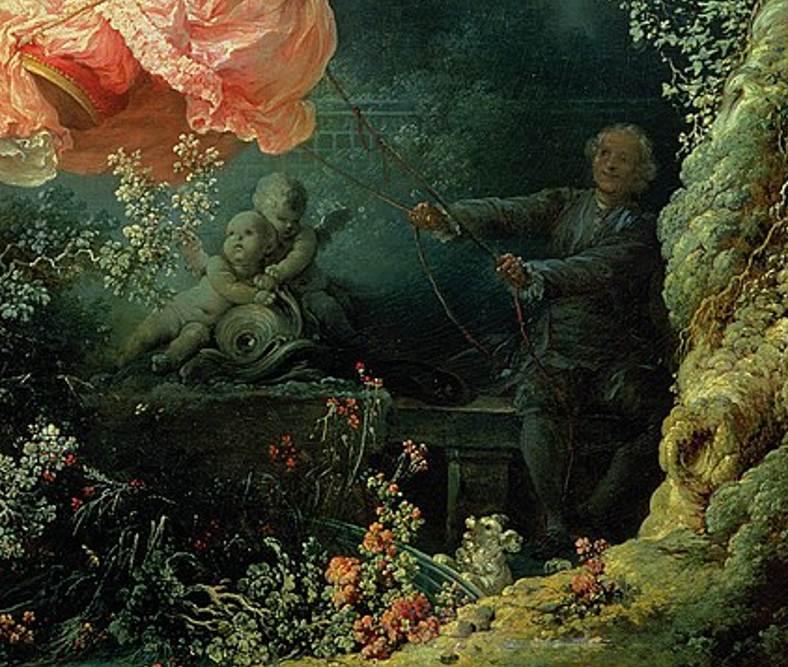If there was ever an artwork created that defines an entire art movement, then this painting by Fragonard fits this description. The exuberant and libertine taste of the French court of the 18th century was the driving motivation behind it.
Let’s take a closer look at some of the most interesting facts about The Swing by Jean-Honoré Fragonard (1732-1806), one of the painter’s most famous paintings and the essence of what Rococo artists stood for.
1. It was painted while Fragonard was in his mid-30s
The Swing is the most famous Rococo painting by one of the most renowned French artists of the Rococo era, Jean-Honoré Fragonard. The promising painter was trained by the leading artist at the time, François Boucher (1703-1770), while he was still a teenager.
This training eventually culminated in Fragonard winning the prestigious Grand Prix de Rome in 1752 and a ticket to the Academy in 1765. From this point forward, he had connections to the most important people in France, including members of the French court of King Louis XV.
Shortly after he was accepted to the Academy in the mid-1760s he started working on this remarkable work of art and completed it in 1767.

2. The original title of the painting reveals its subtle eroticism
The original title of the painting was “Les Hasards Heureux de l’Escarpolette,” something that translates to “The Happy Accidents of the Swing.” This title mainly refers to the figure we can see in the bottom left corner.
As the young woman is swinging upwards, she can be seen kicking her shoe in the air. The young man nearby can be seen peeking into her dress as it lifts in the air as well due to the motion of the swing.
This is the ultimate frivolous subject matter that defines the Rococo art movement as it features a subtle sense of eroticism.

3. It was commissioned by a member of the French court
Because Fragonard was an established member of the Academy he was able to earn commissions from the countless members of the French court who adored these types of frivolous paintings.
It remains clear until today who exactly commissioned the work, but we do know that it was a member of the French court who wanted a painting of himself together with his mistress.
One of the most remarkable facts about The Swing by Fragonard is that, according to French dramatist Charles Collé, this man didn’t engage Fragonard initially but French painter Gabriel François Doyen (1726-1806).
He was an equally renowned artist at the time and winner of the Grand Prix of Rome during his early twenties. He found the subject matter to be too frivolous and therefore passed on the commission to his colleague Fragonard.
4. The old man pushing the swing wasn’t part of the original commission
The request of a member of the French court to paint his mistress on a swing wasn’t that big of a deal to Fragonard. He did, however, made a change to the original commission to avoid being in trouble with members of the clergy.
The unidentified courtier originally asked Fragonard for the swing to be pushed by a Bishop. The artist eventually changed this request and painted a layman, an ordinary member of the Catholic church.
This old man, who is seemingly unaware of the young man peeking into the dress of his mistress, can be seen just behind her, virtually hidden into the shadow.
Other elements featured in the painting are 2 statues, one of a single angle and one of a pair of angels, and a small barking dog just in front of the old man who is pushing the swing.

5. It became a controversial work at the end of the 18th century
This sense of exuberant paintings produced during the final decades of the Ancien Régime was just one of the multiple hot issues debated during the Age of Enlightenment.
The libertine attitude of members of the French court wasn’t appreciated, especially during a time of a continuing economic crisis in which the ordinary people in France were the ones suffering.
This attitude not only lead to the French Revolution but also marked the end of Rococo in general, allowing young talented artists such as Jacques-Louis David (1748-1825) to lead the way towards the glory days of the Neoclassical artists of the late 18th and early 19th centuries.
6. Several copies of this famous painting have been made
The Swing became so successful during the final decades of the Ancien Régmie that it was reproduced several times. None of these copies have been attributed to Fragonard himself but members of his workshop.
One of the copies depicted the mistress on the swing wearing a blue dress, while the other is an identical, yet smaller, copy of the original. This copy is now on public display at the Musée Lambinet, a museum in Versailles near the immense Palace of Versailles.
The original version of the painting has dimensions of 81 × 64.2 centimeters (31.8 × 25.2 inches) while the copy just measures 56 x 46 centimeters (22 x 18 inches).

7. It’s unclear what happened to the painting before the French Revolution
Nothing is known about the identity of the man who commissioned the work and his mistress on the swing. For the first 30 years of its existence, it remained in obscurity until it was mentioned in an inventory during the French Revolution.
A tax collector named Marie-François Ménage de Pressigny (1733-1794) was guillotined by the revolutionaries in 1794 and he was somehow the owner of The Swing. After he was killed, the painting was seized by the temporary government at the time.
8. The small painting can be admired in a London museum today
What happened to the painting following the French Revolution remains unclear as well. After all, Rococo had fallen completely out of favor during this period in history so it was probably seen as a worthless symbol of the old regime.
It was owned by the Duc de Morny during the 19th century and was auctioned in Paris in the year 1865. Here it was bought by Lord Hertford, an English aristocrat who established the Wallace Collection.
Today, the painting can be found at the former residence of the Marquesses of Hertford, the Hertford House in Manchester Square, London.
This mansion was turned into a museum referred to as the Wallace Collection and its incredible interior is decorated with numerous fine works of art by Old Masters divided into 25 galleries.



